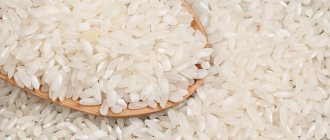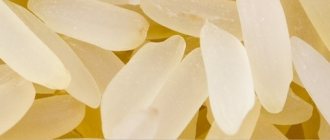Sometimes it seems that many people neglect lentils, preferring other legumes such as peas, beans, and beans. And this seems strange, since lentils are not only an affordable and tasty product, but also very healthy. For example, the Czechs never forget about this, for whom this culture symbolizes wealth and prosperity (these beans resemble small coins). And for the New Year in this country it is customary to prepare lentil soup - tasty, healthy and very appetizing.
What are lentils
Lentils are an annual legume native to Central Asia, where, according to historians, people consumed these fruits in prehistoric times. During archaeological excavations in the Middle East, lentil seeds were found that are over 8,000 years old. For thousands of years, barley, wheat and lentils were the three main crops grown by different peoples.
Content:
- What are lentils
- Varieties
- The nutritional value
- Benefits for the human body
- Who benefits from lentils?
- Possible side effects
- Use in cooking
- How to cook lentils
- Culinary ideas
- Lentils for beauty
Today, lentils are an indispensable product of Indian cuisine. This crop is consumed in many Catholic countries during Lent. In the modern era, the world's main exporters of these amazing beans are India, Turkey, Canada, China, and Syria [1].
Types of Lentils
This plant comes in several varieties, each of which has its own advantages and some nuances of preparation.
Brown lentils
A popular species that emits a nutty aroma when cooked. It cooks quickly and is used in the preparation of soups, meat dishes, vegetable salads and casseroles.
Grains of this type have all the beneficial properties of lentils; the main thing is to ensure that they do not overcook.
Red lentils
Thanks to its spicy aroma, it is popular in Asian cuisines. Red lentils, the benefits and harms of which are similar to the properties of this plant as a whole, are prepared in just 15 minutes. It is good to add to the diet for anemia, poor memory and attentiveness, and problems with the nervous system.
To benefit from a variety rich in potassium and iron, we avoid overcooking the grains: boiled grains lose some of their properties.
Green lentils
These are beans that have not yet ripened to the end. They contain large quantities of plant fibers that cleanse the intestines of toxins and help with constipation.
Due to their ability to not boil, green lentil grains are added to soups, salads, and used as a side dish or filling for pies.
Black-green lentils (puy)
This species was bred in France, in the city of Puy. A very healthy variety that takes a long time to cook, exudes the aroma of pepper and has a distinct taste.
Used in cooking as a side dish or addition to salads and snacks.
Yellow lentils
The beautiful yellow grains are polished green lentils. When the top layer is removed, yellow beans remain. They do not lose their beneficial properties and boil quickly.
Most often, yellow lentils are used for cooking porridge, puree or soup.
Black (beluga)
An expensive type that contains an increased amount of antioxidants that prevent the development of cardiovascular, cancer and other diseases and premature aging.
Black beans hold their shape and are suitable for making soups and salads.
By the way, the healthiest bread and other pastries are made from ground lentils.
Varieties
Lentil fruits are small beans whose size and shape vary depending on the variety. It is eaten all over the world as a rich source of phosphorus, calcium, iron, and B vitamins. There are many types of this crop, but brown, green, red and lentils are considered the most delicious [2].
Green and brown beans are suitable for warm salads and casseroles; As a rule, they retain their shape well after cooking.
Red lentils are ideal for making purees, as an addition to soups and casseroles (as a thickening ingredient), and are often used in Indian cuisine.
Yellow beans have a red-like appearance and are used to add color to winter dishes.
Lentils in proper nutrition
In dietary nutrition, the product occupies far from the last place. Many diets have been invented with this product; there are also special programs on lentils for people who have problems with the gallbladder. Diet No. 5 is considered the most popular - this treatment course helps not only to improve the health of the body, but also to lose excess weight. This diet is based on frequent eating - 5 times a day, and the food must be chopped. Lentils are one of the ingredients allowed for consumption during diet No. 5.
Lentil diets have many positive reviews, but you should not expect dramatic weight loss from them. As a rule, women lose no more than 3 kilograms per month of dieting, since a properly constructed diet is a balanced diet that will simply relieve the body.
© zia_shusha – stock.adobe.com
Many people are concerned about the question: “What can replace lentils on a diet?” Alternatively, you can eat peas, beans or chickpeas. But is it worth replacing lentils, if only they contain the most fully digestible vegetable protein? At the same time, any varieties are equally useful: red, green, yellow, orange.
You can use lentils for weight loss in any form, but most often it is a boiled product in combination with other vegetables, fish or meat. There are a huge number of recipes and dishes that can be prepared on fasting days. These can be soups, lentil cutlets, salads with lentils, in addition, no one has canceled beans as a side dish. Get creative and add variety to the menu. Don’t forget about sprouted lentil beans, they have a beneficial effect on the body, relieving it.
The nutritional value
Lentils are a food with a low glycemic index and low fat content [3].
Among the valuable components of this culture is fiber, which is presented in the product in soluble and insoluble forms. Regarding the vitamins and minerals contained in this plant, one cannot fail to note the extremely high reserves of molybdenum. In addition, lentils contain almost the daily requirement of folic acid, and can also replenish 50% of the daily requirement for phosphorus, copper and manganese. This product is also rich in B vitamins, magnesium, zinc and potassium.
The table shows the nutrient content per 100 g of product [4].
| Calorie content | 295 kcal |
| Carbohydrates | 46.3 g |
| Squirrels | 24 g |
| Fats | 1.5 g |
| Vitamin A | 5 mcg |
| Vitamin C | 4.4 mg |
| Vitamin E | 0.5 mg |
| Vitamin K | 5 mcg |
| Vitamin B1 | 0.5 mg |
| Vitamin B2 | 0.2 mg |
| Vitamin B3 | 5.5 mg |
| Vitamin B5 | 1.2 mg |
| Vitamin B6 | 0.5 mg |
| Vitamin B9 | 90 mcg |
| Kholin | 96.4 mg |
| Calcium | 83 mg |
| Iron | 11.8 mg |
| Magnesium | 80 mg |
| Phosphorus | 390 mg |
| Potassium | 672 mg |
| Sodium | 55 mg |
| Zinc | 2.4 mg |
| Copper | 0.66 mg |
| Manganese | 1.19 mg |
| Selenium | 19.6 mcg |
| Water | 14 g |
| Ash | 2.7 g |
How many calories are in lentils
The calorie content of lentils per 100 g ranges on average from 350 (red varieties) -360 (green varieties) kcal depending on the variety, that is, on average it contains the same number of calories as most legumes.
Depending on how lentils are cooked, the calories in them are reduced to varying degrees. So, when cooking, the calorie content decreases by about 2.5-3 times due to the addition of water and an increase in volume. The calorie content of boiled lentils is 110-119 kcal.
Canned lentils calorie content changes to 110 kcal per 100 g.
Raw sprouted beans contain only 106 kcal. When they are fried, approximately 101 kcal remains, and when boiled in water – 111-112 kcal.
Adding salt during heat treatment does not significantly affect the calorie content of the finished food.
The ratio of BJU of dry lentil grains does not differ significantly in different varieties of the product:
| Lentil color | Proteins % | Fat % | Carbohydrates % |
| Green Red | 28 26 | 2 2 | 58 57 |
Benefits for the human body
Lentils are an extremely nutritious member of the Legume family, which has many beneficial properties for the human body.
Digestion
Like other legumes, lentils are one of the main products in terms of fiber content, both soluble and insoluble. Both types of dietary fiber have a positive effect on the digestive system. Insoluble fiber absorbs liquid, swells and, once in the intestines, promotes the rapid elimination of processed waste products. Soluble fiber in the body turns into a jelly-like substance, thanks to which the feeling of fullness is maintained for a long time [5].
Sugar and cholesterol concentration
Lentils are able to stabilize two important indicators in the blood - glucose and cholesterol. For individuals with insulin resistance, diabetes or hypoglycemia, this culture is useful as a substance that stabilizes the balance of glucose and insulin. Researchers compared the condition of two groups of people with type 2 diabetes. They took 24 and 50 g of fiber daily. It turned out that those who took more dietary fiber had lower blood glucose levels [6]. In addition, with regular consumption of fiber, the concentration of low-density lipoproteins (better known as “bad” cholesterol) decreased by almost 12.5%.
Metabolism and Cell Health
B vitamins, which are found in abundance in lentils, are involved in the metabolism of amino acids and carbohydrates. Manganese, one of the powerful antioxidants, also contributes to this process. And magnesium, by activating certain enzymes, improves tissue regeneration. Potassium contained in legumes maintains acid-base balance, regulates growth and pressure inside cells.
The cardiovascular system
Scientists conducted an experiment to determine how diet affects the risk of developing coronary heart disease (CHD). As a result of the experiment, which involved over 16 thousand middle-aged people, the following was established: people whose diets are dominated by grains, legumes and vegetables are almost 80% less likely to develop coronary heart disease.
In another study, it became known that people whose diet is rich in fiber, present in large quantities in lentils, are less susceptible to cardiovascular diseases [7]. Last but not least, this is possible thanks to the high concentration of folic acid (B9) and magnesium. Vitamin B9 helps reduce levels of homocysteine, an amino acid that researchers name among the main risk factors for developing heart disease. Magnesium in adequate doses improves the quality of blood flow and also affects the availability of necessary oxygen and nutrients in the blood. A deficiency of this element can cause a heart attack.
Lentils on the table – health in the family
Regular use of lentils in the diet will support the vitality of all family members:
- For men of active working age, it provides endurance. Substances contained in lentils help eliminate sexual dysfunction.
- The large amount of phytoestrogens in lentils helps women in adolescence cope with hormonal changes.
- For older people, lentil dishes will help lower blood cholesterol levels and prevent the development of diabetes, because the seeds have a low fat content and a low glycemic index.
- Lentils are recommended for children starting from the age of two, due to the correct ratio of minerals in its composition, which creates conditions for the harmonious growth and development of the child.
- For athletes, lentils are an important source of energy during increased physical activity.
The first and second courses of lentils will compensate for the deficiency of B vitamins in the human body.
Who benefits from lentils?
Being a food rich in nutritional components, lentils are beneficial [8]:
people with diabetes;- with high cholesterol;
- persons prone to anemia;
- pregnant women and those planning pregnancy;
- with excess weight;
- persons with digestive disorders;
- to restore the condition of the epidermis and hair.
In addition, in alternative medicine this plant is used as a medicine for dermatitis, burns, inflammation and allergic itching. This representative of legumes is able to crush and remove stones from the urinary system, prevent breast cancer, relieve fatigue and even treat stomach ulcers. Lentils are useful for vitamin deficiency. For colds, dishes made from it have a warming effect.
Which lentil grains are the healthiest?
In stores, the fruits of the plant are sold canned or dried and differ in color and taste. To understand how to choose beans, you need to decide what they will be used for. Yellow varieties are suitable for soups, for salads it is better to buy green grains, red ones boil quickly, and are good for purees. The black type of beans pleases with a delicate taste, the brown type has a nutty smell.
Attention! You cannot purchase cereals or seeds in torn packaging after the expiration date.
It is difficult to say which lentils are healthy, since every type of legume has medicinal properties, but any product can be harmful.
Green varieties help build muscle and contain the maximum amount of proteins.
Red beans improve vision and restore skin elasticity. Yellow fruits benefit women bearing babies; they contain a large amount of folic acid, but if abused, they can cause harm to the body of both mother and child. All lentil cereals contain:
- antioxidants;
- vitamins B1, B2, K;
- carotenoids;
- a nicotinic acid.
Orange grains contain more estrogens, which prevent cancer and women's diseases. Red varieties have virtually no fat; dishes made from them are eaten for weight loss.
Possible side effects
Lentils are a healthy ingredient for humans. But overindulgence in the product can cause flatulence, and frequent consumption of these beans without sufficient replenishment of the water balance causes constipation. It is undesirable for people with acute gastrointestinal diseases to get too carried away with beans. Lentils contain molybdenum in extremely high concentrations. And this substance, consumed regularly and in large doses, sometimes causes arthritis [8].
You should not feed lentils to your pets. This product can cause fermentation and increased gas formation, and in some cases can even cause their death.
Contraindications for use and harm
Although lentils are extremely healthy, they also have a number of contraindications for inclusion in the diet. In order not to harm the body, people who have problems with the gastrointestinal tract should eat lentils with caution, as this legume product can contribute to gas formation. Those who suffer from dysbiosis should also avoid eating lentils for the same reason.
Advice! In order not to overload the stomach, it is recommended to soak legumes before cooking.
If you eat lentils too often, there is a chance that your skin will become dry and lose elasticity.
Doctors do not recommend strictly limiting your diet. Lentils are healthy only if eaten in moderation and combined with other foods. Two or three times a week is enough to saturate the body with everything that this culture is so rich in.
Culture is strictly contraindicated for people suffering from gout.
© Andriy Pogranichny – stock.adobe.com
Use in cooking
So it’s even difficult to immediately list which dishes you can use lentils for. It is good as an ingredient for soups and with stewed vegetables, and can serve as the basis for vegetarian cutlets. Lentil puree mixed with olive oil, garlic and lemon makes a delicious vegetable pate. Some varieties of this legume are suitable for making cabbage rolls, croquettes, pies, pancakes, dumplings and even a variety of salads.
Remember the benefits of sprouted wheat? A similar “trick” can be done with lentils. To do this, dry seeds must be soaked in cold water and wait until sprouts appear. They are also rich in vitamins and are actively used in Indian cuisine.
Lentils and sports (fitness and bodybuilding)
In the nutrition of athletes, lentils are a healthy and often even necessary product. The fact is that this legume contains a large amount of vegetable protein, which is quickly absorbed. The percentage of protein in lentils is close to that of meat, but there is only one difference: meat always contains cholesterol and fat, and lentils are an unsurpassed source of easily digestible protein, which is extremely necessary in bodybuilding and other sports where muscle growth is important.
Among all legumes, lentils are considered the record holder for iron content. It is this microelement that allows you to maintain the cardiovascular and circulatory system in good shape. A healthy heart will allow you to increase your load and not feel discomfort.
For those involved in fitness, lentils are also an excellent source of energy. The main thing is to use this product regularly, only then will you be able to notice positive changes in your body.
How to cook lentils
According to the rules, lentils should be boiled in a large amount of water (in a ratio of 1:2). During the cooking process, it is important to avoid sour seasonings (they make the product hard and tasteless). Cooking time depends on the type of lentil. Green and brown beans take the longest to cook, ranging from 20 to 45 minutes. Red and yellow varieties of lentils will reach the required consistency in 10-15 minutes [9].
It is advisable to salt the product at the end of cooking, otherwise the beans will remain hard. Tomatoes or other acidic foods can extend cooking time.
If you want the grains to retain their shape after cooking, then you should give preference to brown varieties that do not peel. If you like the sweet aftertaste of cooked lentils, then pay attention to red and yellow beans. By the way, they are the easiest to bring to the consistency of puree.
What lentils look like (photo of grains)
To get an idea of what different types of lentil beans look like, check out the following photos of lentils:
Culinary ideas
Vegetarian dinner
Fry the curry, chopped garlic, onion and ginger in a saucepan (about 2-3 minutes). Add raw lentils, turmeric, a little sugar and mix everything. Then add pumpkin, zucchini, diced bell peppers and broth with a little coconut milk. 15 minutes before the end of cooking, add chopped tomato. Simmer until the ingredients are soft. Sprinkle the finished dish with coriander. Recommended to be served with rice.
Lentil meatballs
Fry the onion in olive oil and add to the boiled lentils. Stir, season with salt and pepper. Form meatballs from the resulting mass, which should be fried in well-heated oil. In a separate pan, simmer the onion, chopped garlic and chili pepper. Add diced zucchini or zucchini, then chopped and peeled tomatoes. Simmer until the vegetables become soft. Serve the meatballs with the sauce, sprinkled with coriander if desired.
Fake pate
Fry chopped onion in oil, add garlic, sliced carrots and a little ginger. Simmer everything together for 10 minutes. Then add lentils and millet to the mixture (1 cup lentils and 1/3 cup millet), fry over high heat for 2 minutes. Pour in the vegetable broth (about 650 ml), add a little salt and simmer for about 15 minutes (until the excess liquid has evaporated and all the ingredients are soft). Add ginger, hot pepper, a little almonds, 2 raw eggs to the cooled mass and mix everything. Place in a mold and bake in the oven at 180 degrees for about an hour.
Beneficial properties of lentils
What are the benefits of lentils for the body?
Are lentils healthy? The benefits of lentils for the body are obvious; just look at its rich composition, which gives it many beneficial properties.
Normalization of glucose levels
Lentil dishes are primarily recommended for diabetics due to their low glycemic index and complex carbohydrate content.
Their consumption maintains normal blood sugar levels and prevents rapid energy loss.
Supplying the body with complete protein
Lentil protein is an excellent alternative to meat, which does not lose its valuable properties when cooked and does not overload the body with prolonged digestion.
Help with weight loss
Red lentils and other types speed up metabolism and provide a long-lasting sensation. Plant fibers improve intestinal function, preventing constipation.
Benefits for the female body
In addition to losing weight, lentils prevent the development of fibroids, breast and genital cancer. By eating lentil beans, women get rid of PMS and gain emotional and hormonal balance during menopause.
It is useful for pregnant women, as it is full of folic acid and other useful components necessary for the normal development of the baby.
Strengthening the heart and blood vessels
When consumed regularly, beans strengthen the walls of blood vessels, protect the heart, normalize blood pressure, and relieve fatigue.
At the same time, lentils, whose beneficial properties are so extensive, relieve inflammation of the joints, strengthen the immune system, heal burns and treat dermatitis.
What are the benefits of sprouted lentils?
To get more of the benefits of lentils for the body from lentil beans, they are sprouted.
During germination, they are additionally enriched with vitamin C (its amount increases 16 times), fiber and antioxidants: there are twice as many of them.
Properties of sprouted lentils
- Strengthening the immune system and preventing influenza and acute respiratory infections.
- Victory over arrhythmia and atherosclerosis.
- Enrichment of blood composition and improvement of hematopoietic function, which is necessary for anemia.
- Strengthening blood vessels, heart and lungs.
- Improving the functioning of the digestive organs.
Sprouted lentils have a green pea flavor and are used in salads, soups and served as a side dish.
Lentils for gastritis: how to eat correctly?
If you have gastitis, you can eat lentils. Moreover, it is recommended to eat green crops. This is because this type contains a lot of isoflavones. This substance actively fights cancer cells throughout the digestive tract: stomach, intestines. A unique feature of lentils is its ability not to lose nutrients even during heat treatment.
If you have gastritis, you can eat sprouted, dry, boiled and even canned lentils. Lentils are also good because this crop is not capable of accumulating toxic substances found in the environment. Therefore, lentils can be safely called an environmentally friendly product.
Is it possible to give lentils to children?
Medical sources equate lentils to any other legumes. It is believed that a child’s body is ready to digest such food from 7 months, but complementary feeding should be started gradually. Most authors agree that 7 months is the exception, and the rule is to start feeding lentils from 1.5 years. Lentils can not only cause flatulence in a child and indigestion, but also provoke an allergic reaction.
Lentil puree is introduced gradually, focusing on the reaction of the child’s body. Changes in stool and well-being are usually monitored. Flatulence and diarrhea should serve as a signal to exclude dishes from the diet. An allergic reaction often manifests itself in the form of rashes, this is also worth keeping in mind.
Complementary feeding begins with softer varieties, for example, red or yellow lentils, gradually transferring the food to the format of something harder, and introducing green or brown cereals.
Contraindications
Buckwheat-based dishes are not recommended for consumption:
- Patients with gastrointestinal pathology.
- Patients with blood clotting problems.
Lentil dishes are not recommended to be included in the diet for people suffering from:
- Diseases of the digestive tract.
- Hemorrhoids in the acute phase.
- Urolithiasis.
- Pathology of the cardiovascular system.
- Joint diseases.
With caution and small doses, you can add legumes to the menu of children and the elderly . The body of these age groups has a hard time tolerating excessive amounts of purine contained in the plant.
The benefits of lentils for the body of men and women
Benefits of lentils for women:
- The rich amino acid content of lentils helps fight breast cancer.
- Acids and amino acids found in culture successfully fight benign and malignant tumors, including uterine tumors.
- Lentils have the unique property of regulating hormonal levels in the body. That is why it is recommended to consume lentils during menstruation and menopause.
- During pregnancy, lentils are useful for women because they nourish the woman’s body and fetus with a mass of useful substances, providing the necessary complex of vitamins and minerals for the development of the baby and maintaining the health of the mother.
- Lentils help normalize metabolism, regulate water, salt, alkaline and lipid metabolism in the body. This is what allows women to lose excess weight.
- During fasting, lentils help you get the full range of essential microelements, without compromising your health.
- Lentils cleanse the intestines of toxins and waste, remove stagnant feces, which in turn improves the absorption of nutrients.
- The rich content of vitamin E allows women to take care of the beauty of their hair, skin and nails.
- Zinc takes care of a woman’s reproductive organs, improves the muscles of the body, making it elastic. This is very useful for pregnant women who are preparing for childbirth.
Benefits of lentils for men's health:
- Due to excessive consumption of alcohol and junk food, men often suffer from cardiovascular diseases. Lentils, rich in vitamins and minerals, help improve the functioning of blood vessels and internal organs. All this happens due to the fact that lentils can lower blood cholesterol.
- Lentils contain a lot of protein, and this is very useful for men who maintain the beauty and health of their body. Protein helps build muscle mass, while potassium and magnesium make muscles elastic and keep them toned.
- Does zinc help the health of male reproductive organs? improves erection and sperm quality.
The health benefits of lentils for men and women
Is it possible to eat lentils if you have pancreatitis?
Pancreatitis is a serious disease characterized by inflammation of the pancreas. Of course, the benefits of lentils, like other legumes, are great, but this crop (like peas, chickpeas and beans) is completely excluded from the menu of a patient with pancreatitis, especially if the patient is in the stage of acute illness.
Fiber, which is abundant in lentils, can adversely affect the functioning of the stomach and that is why eating this crop is prohibited. The pancreas will not be able to produce the required amount of necessary enzymes, which means the person will experience severe pain and indigestion.
IMPORTANT: There is one exception that allows a patient with pancreatitis to eat lentils in limited quantities. This is remission. At this time, the patient eats the “common table” menu. Lentils should be boiled well before taking and consume no more than 1-2 tbsp. once a week.
Who can eat lentils? When should you not eat lentils?
Types and culinary features
The choice of cereal depends on the culinary plan. Soups, salads and side dishes use varieties that retain their shape well, while boiled lentils are more suitable for main courses.
- Red varieties of lentils give the broth a beautiful bright color that stimulates the appetite. Its grains quickly boil without pre-soaking and at the same time retain their shape.
- Green lentils, cook for about 30 minutes, keeping the shape and elasticity of the grains well. When boiled, it acquires a light mushroom flavor and a spicy aroma.
- Yellow lentils, which are obtained from certain varieties of green lentils after removing the outer shell, acquire a more delicate consistency after cooking. However, together with the shell, such cereals are partially depleted of minerals and vitamins. The bright color of the grains goes well with other ingredients in salads, soups and main courses.
- Brown cereal has a delicate nutty flavor. It cooks on average for about 30 minutes. During this time, the grains are boiled to a homogeneous mass, which can serve as the basis for porridge, dough for pancakes and pancakes, and casseroles.
- The smallest lentils with rounded black grains, which are called “beluga” due to their resemblance to fish caviar, are also valued.
In terms of nutritional properties, lentil cereals can replace bread and even meat.
What are the benefits of lentils
Lentils, whose benefits for the body are not limited to the optimal ratio of BJU, also deserve attention in other respects.
- The protein gluten, which causes food allergies in susceptible people, is completely absent. In this regard, the consumption of lentils is indicated for people suffering from celiac disease.
- The low glycemic index (20 in red varieties, 30 in green varieties) makes cereal a valuable dietary product suitable for people with diabetes.
- Lentils help improve metabolism, improve immunity and normalize the functioning of the urinary system.
- It cleanses the body of waste, toxins and radionuclides, which is a very important property in the modern environmental situation.
- The plant's root system selectively consumes nutrients from the soil, avoiding nitrates and toxins. Thus, the products always remain environmentally friendly.
This is lentils, the benefits and harms of which for human health are incomparable. But still, people with chronic problems need to take into account the dangerous sides.
The benefits of lentils for nursing mothers during breastfeeding
During breastfeeding, it is important to give the baby all the nutrients necessary for its development. This happens through breast milk. To be more precise, everything that the mother eats reaches the baby in the form of milk.
When creating a menu, you should take into account the feeding habits of infants. Lentils are a healthy product, no doubt. It contains many vitamins and minerals that will help the child strengthen all body systems and form a strong, stable immune system.
However, you should also pay attention to the fact that lentils are a product that causes flatulence. That is why, in order not to cause discomfort and pain to the baby, you should exclude lentils from your diet until 4-5 months (it is before this period that children experience severe and painful colic).










